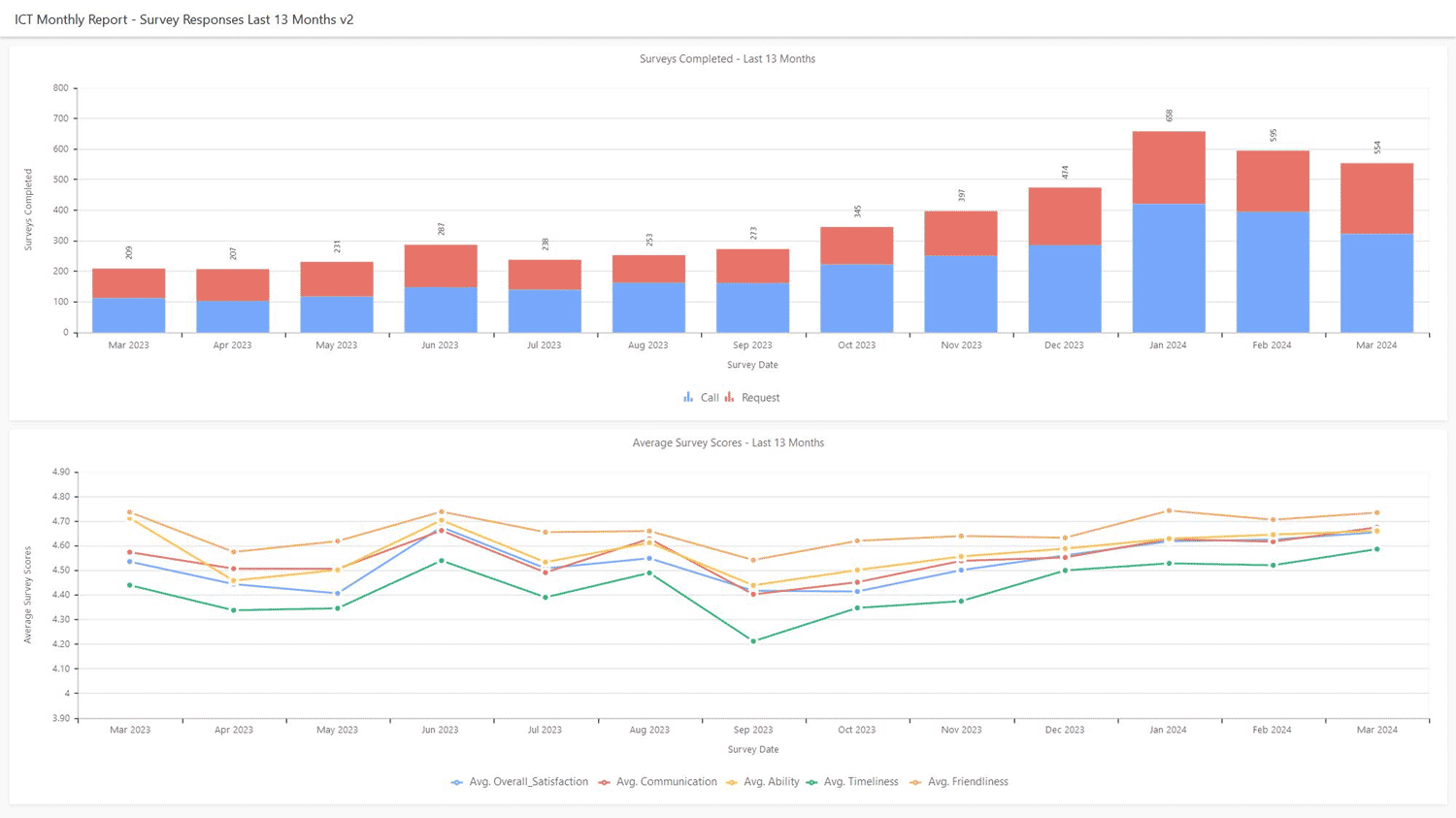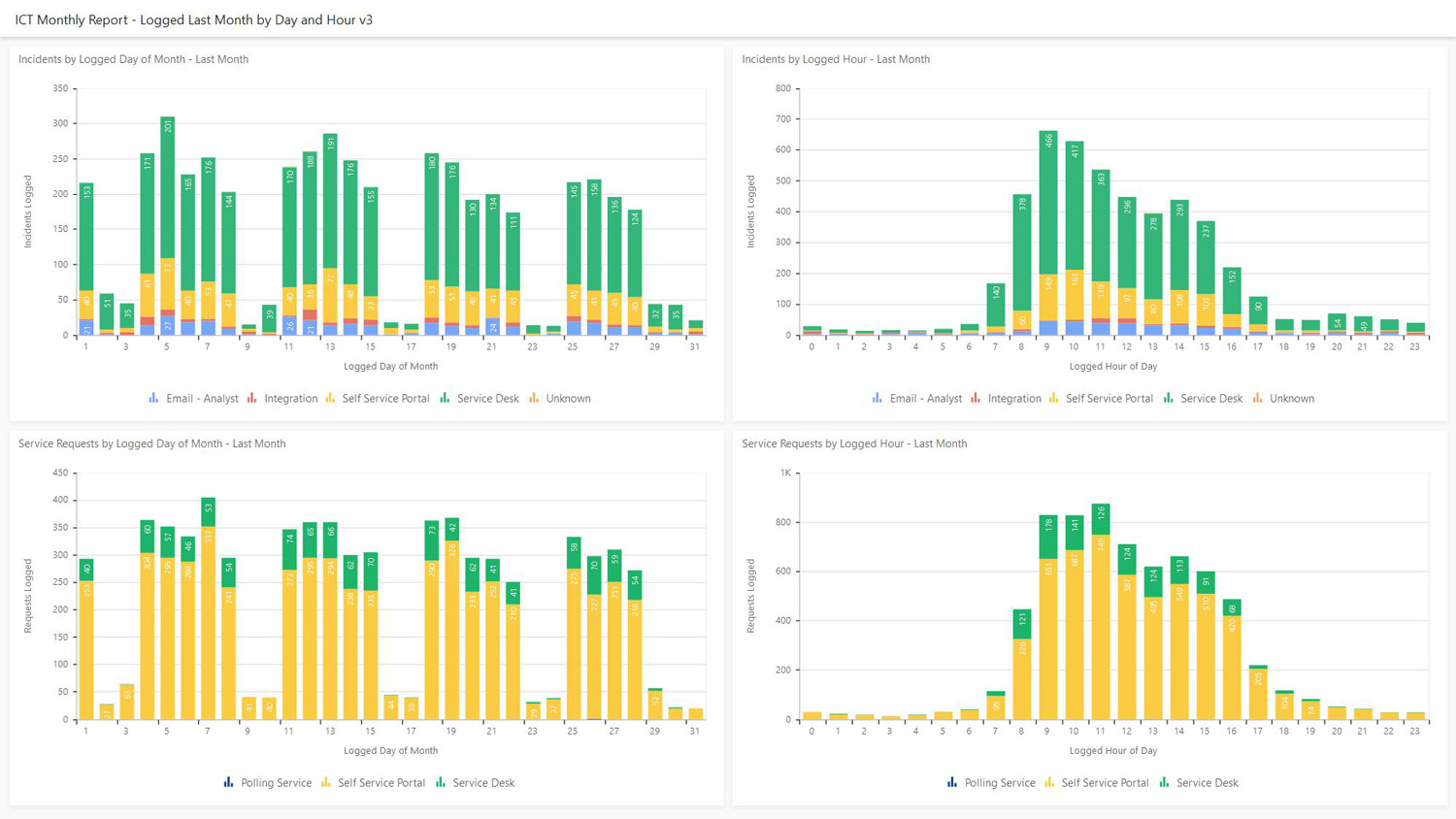Industry
Uses
Flexible Options
Services



Barts Health NHS Trust launched a long-term project with the goal of developing the maturity of its IT processes and significantly evolved their use of Alemba Service Manager to meet this objective.
Barts Health NHS Trust launched a long-term project with the goal of developing the maturity of its IT processes and significantly evolved their use of Alemba Service Manager to meet this objective.
Consisting of over 100 agents in IT, and 100 more in other departments such as Finance, Procurement, and Accounts, the Barts Health ICT team is responsible for serving approximately 24,000 end users.
Barts Health NHS Trust is one of the largest NHS trusts in England, delivering world-class clinical services to approximately 2.5 million people living in east London.
The Trust operates from five major hospital sites (The Royal London, St Bartholomew’s, Whipps Cross, Newham and Mile End) and several community locations.
As a value-driven organisation, Barts Health is committed to upholding its ‘WeCare’ values, an acronym which stands for: Welcoming, Engaging, Collaborative, Accountable, Respectful, and Equitable. The mission to enhance the patient experience is at the heart of everything the team at Barts Health do - and this ethos is extended to the ICT Department.
Consisting of over 100 agents in IT, and 100 more in other departments such as Finance, Procurement, and Accounts, the Barts Health ICT team is responsible for serving approximately 24,000 end users.
The department forms part of the Informatics Directorate and is tasked with offering reliable and secure IT services, systems, and infrastructure to help the Trust run smoothly.
ICT has departments that offer various functions and services, such as Service Delivery, Operational Management, End User Computing, and Network and Security.
The core clinical IT system, Oracle Millennium, enables staff to retrieve patient information through a live, interactive, electronic health record, which is available 24 hours a day, seven days a week, from anywhere in the Trust.
In addition to this core system, ICT also works with various other critical applications and services. The department supports a wide range of technology, from Windows PCs, Thin Clients, VDI, various clinical applications, on premise and cloud-based servers, printing, scanning, telephony and many specialist healthcare services.
ICT supports all areas of the Trust, including clinical areas, operational, business, HR and estates and forms an essential part of enabling service within the organisation.

HIMSS Accreditation Day
In late 2020, Barts Health NHS Trust launched a long-term project with the goal of developing the maturity of its IT processes.
“We could see that ASM had the potential to do most, if not all, of our immediate and future needs and were confident that Alemba could help us on this maturing journey.”
The Trust had been using Alemba Service Manager (ASM) to streamline their service management processes since 2019 and needed to reassess their use of the service desk tool to ensure it aligned with the objectives of their maturity project.
While Alemba Service Manager was being used to good effect for Incidents and Requests, many of the features, such as Change Management, surveys and data analytics remained under-utilised.
“Early analysis showed that ASM could do much more than we were using it for,” says David Rimmer, Head of ICT, Service Delivery at Barts Health “We could see that ASM had the potential to do most, if not all, of our immediate and future needs and were confident that Alemba could help us on this maturing journey.”
Satisfied that ASM was up to the task, the Trust could focus on developing their service management processes to meet the overall goals of the project.
The key objective of Barts Health’s ITSM maturity project was to improve the end user experience of IT generally, but also of the service desk tool itself.
To facilitate this goal, the Barts team planned to modernise the self-service portal by increasing specific request tiles, improving the look and feel and making it simpler and easier to navigate.
Further ITIL processes, such as Problem Management and a Service Catalogue, would also be implemented to extend the functionality of the ASM tool.
In addition, an important part of the project was ensuring enhanced visibility and monitoring of processes and establishing proper governance for infrastructure changes.
Achieving INFRAM accreditation would serve as a good litmus test of overall infrastructure maturity, confirming to the Bart’s team that they had achieved their initial goals and that future plans were aligned.
The Trust wanted to enhance IT efficiency and reduce the need to contact the ICT service desk. To achieve this, the team needed to understand where the pain points were and be more proactive in identifying themes and preventing issues.
“Part of the frustration was knowing that the ASM tool could do so much more than we were using it for, and that we could be so much more efficient”
The service desk portal, which was used across several departments, was identified as one of the key areas for improvement. It was difficult to use and provided little benefit to users, resulting in increased phone calls and emails to the service desk. This tendency to circumvent the self-service channel was adding additional strain on staff resources and hampering productivity.
In addition, the ASM ITSM tool was not being used to its full potential, with many processes either not fully integrated with ASM or being performed manually. This resulted in a lack of insight into processes, constant firefighting and repeated issues.
The Change Management process, while mature, was not integrated with ASM and followed a manual document-based process. By not leveraging ASM’s built-in Change functionality, the Trust was missing out on many efficiencies, as well as the visibility that comes with having these processes incorporated into the tool.
Reporting was also being completed manually by extracting data from ASM to Excel and then manipulating it. This was a long and tedious process that led to outdated analytics and unnecessary workload for service desk staff.
“Part of the frustration was knowing that the ASM tool could do so much more than we were using it for, and that we could be so much more efficient,” says David Rimmer.
As part of the overall maturity project, Barts Health significantly evolved their use of Alemba Service Manager.
The project has been ongoing for the last 3 years and is focused on improving the end user experience. This has meant streamlining user-facing functionality as well as improving back-end processes that have an indirect impact on end users.
One of the first enhancements to be implemented was an effective mechanism for reporting.
Faced with balancing business as usual with not only ongoing improvement work, but also the many critical challenges brought on by the COVID-19 pandemic, ICT was clear that establishing good reporting was an essential first step. This would enable them to quantify the benefits of the project and demonstrate its value.
“Often focusing on reporting first may not seem the obvious choice, but being able to see the impacts of any future changes and improvements is invaluable,” says David.
With reliable analytics and reporting in place, it was time for the ASM self-service portal to receive a much-need redesign. The team focused on making the portal more user-friendly and replaced generic service tiles with specific tiles to drive engagement, and ensure the correct information was provided first time to avoid having to go back to end users and ask for more information.
Additionally, ICT also implemented improvements to Incident and Request Management, surveys, and the CMDB.

Graph 1: ICT user survey responses showing average survey scores and number of surveys completed over the past 13 months.
Several new processes were introduced, including Change Management, High Severity Incident Management, Problem Management, and a Service Catalogue.
Other improvements included liaising with partners to set up integrations with other service desk tools and developing partitions for non-IT teams to use.
Throughout the process, the Bart's team engaged with Alemba consultants for advice and assistance to ensure the project was moving forward smoothly.

Graph 2: Ticket breakdowns for the past month
The updates made to the Alemba Service Manager system was just the tip of the iceberg. At the time of the maturing process, Barts were also implementing other workload streams such as replacing core networks, migrating servers to the cloud and making improvements to the infrastructure in preparation for the INFRAM assessment.
The ICT team at Barts Health NHS Trust has seen a significant improvement in end user feedback since implementing these changes and improvements.
The replacement of generic request tiles with specific request tiles on the portal now means that the right information is collected and passed on to the right teams, sometimes automatically. This has resulted in over 15% improvement in the Trust’s resolution rate (SLAs).
Making the portal easier to use and gaining end user confidence in it, has allowed the phones to be freed up for urgent calls rather than requests or issues that are not time critical.

Graph 3: Ticket distribution showing Requests and Incidents logged over the last month
Perhaps most impressively, Barts Health NHS Trust has become the first in the UK ‐ and the first healthcare organisation in Europe ‐ to be awarded the Infrastructure Adoption Model (INFRAM) Level 6 (out of 7) rating from the Healthcare Informatics and Management Systems Society (HIMSS).
This follows from an in-depth assessment of the Barts Health IT infrastructure and a strategic technology plan for specific goals, including clinical operations, patient outcomes, data security and more.
The final analysis showed that the Trust was clearly demonstrating its ongoing commitment to improving patient safety and the overall quality of clinical care through the effective use and deployment of Electronic Patient Information Systems, enabled by outstanding technical infrastructure and associated processes and governance.
The assessment team were particularly impressed by the way that the hospital has embraced and addressed the INFRAM requirements, particularly around governance and strategy, managing the access layer, Change Management and making the important connection between infrastructure maturity and business benefits.
As part of Barts Health’s commitment to continual improvement, the ICT team plans to continue evolving their use of Alemba Service Manager. A number of improvement projects are currently at various stages of planning and implementation, including:
The Trust is also exploring Artificial Intelligence (AI) as a means of improving service delivery, self-help and user experience.
Barts Health NHS Trust is just one of many customers in the Healthcare sector we successfully support. Speak to our knowledgeable team today about how ASM can transform IT Service Management within your organisation.
Kirklees Council leverages Alemba Service Manager (ASM) to streamline their IT Service Management, enhancing self-service capabilities and IT operations across the borough. Through their partnership with Alemba, Kirklees Council has transformed its IT services, achieving greater efficiency, user satisfaction, and alignment with ITIL best practices.
St. Helens Council, serving 180,000 residents and over 7 million annual visitors, became the first UK local authority to achieve ISO/IEC 20000 certification with Alemba Service Manager (ASM) playing a pivotal role. The Council selected ASM to support their digital transformation efforts and raise the standard of IT service delivery across the organization.
A leading UK-based food manufacturer partnered with Alemba to roll out automated, scalable service management portals for Logistics, IT, and HR teams. The Logistics portal was a direct requirement for post-Brexit regulations for the export of food products. Alemba Service Manager (ASM) enabled the customer to deliver department-specific portals, rapidly deploy self-service workflows, and integrate across multiple business-critical systems.
The Indiana Department of Revenue transformed its IT operations with Alemba Service Manager, automating processes, enhancing compliance, and delivering seamless service to over 1,000 users across 10 departments.
Frimley Health NHS Foundation Trust transformed IT Service Management with Alemba Service Manager, streamlining workflows, enhancing efficiency, and delivering measurable improvements - including increasing CSAT to 80% and an 82% reduction in escalations within three months.
Te Herenga Waka - Victoria University of Wellington uses IT Service Management tool, Alemba Service Manager (ASM), to streamline ITSM, enhance customer satisfaction, and achieve process efficiencies across multiple departments.
A New Zealand Government agency partnered with Alemba to enhance their IT service management (ITSM) capabilities, transforming their operations into a fully functional enterprise service management platform. Alemba Service Manager helped the agency streamline workflows, increase automation, and efficiently manage service requests for multiple agencies while maintaining a shared services model.
Luton Borough Council (LBC) successfully transitioned their IT support back in-house, implementing Alemba Service Manager (ASM) to streamline and enhance their IT Service Management processes.
Worcestershire County Council enhances IT service delivery and efficiency using Alemba's IT Service Management solution, Alemba Service Manager (ASM), benefiting 5,000 customers and 100 analysts.
APS Bank harnesses Alemba Service Manager's powerful automation to make employee on-boarding and management quick and simple, reducing the requirement for repetitive tasks and minimizing human error.
Barts Health NHS Trust launched a long-term project with the goal of developing the maturity of its IT processes and significantly evolved their use of Alemba Service Manager to meet this objective.
With Alemba Service Manager, the Thirteen Housing IT team was now able to visually show the automated process, from the initial email through to the creation of requests, the completion of tasks and the final outcome of granting or revoking access to equipment such as company laptops.
Established in 1883, The Kroger Co. is one of the largest general retailers in the United States.
Liverpool City Council is the governing body for the city of Liverpool in Merseyside, England. It consists of 90 councillors, three for each of the city's 30 wards.
For a newly-trimmed Service Desk department, coping with over 200 analysts across 16 divisions as diverse as payroll and motor vehicles was a big ask. That was, until they used Alemba Service Manager + vRealize Orchestrator to automate their Active Directory updates.
Dumfries and Galloway Council is the third largest in Scotland and serves a population of almost 150,000 people. The Council’s IT team consists of 75 members, three of which are dedicated help desk technicians that support 3,000 corporate users, 3,000 school network users and 4,500 devices in offices and remote locations.
Founded in 1883 Cardiff University boasts 6000 staff members and 28 000 students across two main campuses, three colleges and 27 schools.
Barnardo’s is a British charity that works to protect, nurture and provide opportunities for the most vulnerable children and young people. It works directly with 240,000 children, young people and families every year and runs more than 960 vital services across the UK.